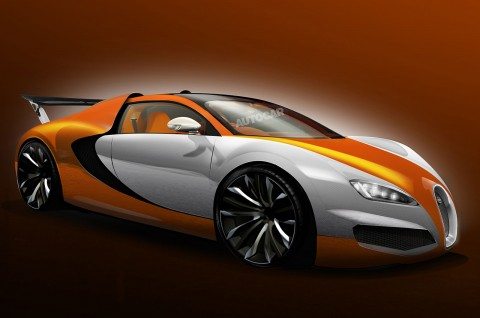For anybody who thought that car makers and their new found enthusiasm to go hybrid will curb the human obsession of going faster than ever, allow us to break some really fast news to you. The Bugatti Veyron replacement, which will adopt a heavily updated version of its predecessor’s turbocharged 8.0-litre W16 engine will produce about 1500 PS. Its top speed will be in the region of 268 Mph (460 kmph) or north and should boast of a 0 – 100 time in the region of 2.3 seconds.
The new Bugatti is currently undergoing engineering tests and will be revealed in 2016. Five development prototypes have already been developed with different engine configurations. The new Bugatti has been built around a carbon-fiber monocoque which will seat two and the cabin will be ultra-luxurious, replete with the latest technology. The engine could feature a new direct-injection combustion process which will replace the multi-point injection system that was in use until now. This will make the engine comply with more stringent Euro 6 emissions standards and reduce fuel consumption. With the ongoing trend of marrying the engine to a hybrid motor, the new Bugatti will feature an electric motor mounted within the gearbox housing and powered by a lithium-ion battery. Bugatti will do all they can to keep the weight lesser than 1840 kgs, that’s how much the current Bugatti Veyron Super Sport weighs. So it might become the fastest production car and leave the Power-to-weight ratio consolation to the Koenigsegg One:1 and the Hennessey Venom F5.
The new car will also feature active aerodynamics, which will provide varying levels of downforce depending on the way the car is driven. It will not look radically different from the Veyron, keeping in mind the engineering complexities involved in developing such a machine. However, even with all of this in place, the only problem Bugatti think they will face is finding the right tyres which can sustain such extreme speeds and a long enough piece of tarmac to test the top speed.
Source: Autocar

